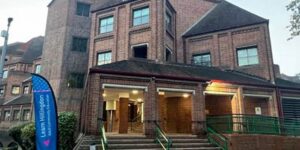Education :Curriculum Why MIT Stands Out in Education-2025
Pioneering Curriculum
One of the standout aspects of MIT’s approach to education is its forward-thinking curriculum. This institution has a long-standing tradition of integrating educational programs with the latest advancements in technology and society. The curriculum at MIT is crafted to challenge students while also offering flexibility, enabling them to tailor their learning experience according to their personal interests and career aspirations. Whether it’s through groundbreaking courses in areas like artificial intelligence or through hands-on projects in various engineering fields, MIT’s curriculum is designed to provide students with both theoretical knowledge and practical skills.
A notable feature of MIT’s curriculum is its emphasis on interdisciplinary learning. Students are encouraged to explore multiple fields of study, which helps them gain a more comprehensive understanding of complex problems. This interdisciplinary approach not only broadens students’ horizons but also equips them with diverse skill sets that are highly valued in today’s multifaceted job market.

MIT also places a strong focus on experiential learning. Programs such as the Undergraduate Research Opportunities Program (UROP) allow students to engage in research from the early stages of their academic journey. These programs provide invaluable hands-on experience, enabling students to apply classroom theories to real-world scenarios. This kind of practical learning ensures that students are not just passive recipients of information but active participants in the creation of knowledge.
Another significant aspect of MIT’s curriculum is its adaptability. The institution regularly updates its courses to reflect the latest trends and innovations. This commitment to staying current ensures that students are learning the most relevant and up-to-date information. For example, as new technologies emerge, MIT quickly incorporates them into the curriculum, allowing students to work with cutting-edge tools and concepts.
The flexibility of MIT’s educational programs also means that students have the opportunity to engage in various extracurricular activities that complement their academic pursuits. Clubs, competitions, and special projects provide additional platforms for students to apply their knowledge and skills in different contexts. These activities not only enhance their learning experience but also help them build a well-rounded profile.
Furthermore, MIT’s curriculum is supported by a wide array of resources designed to facilitate student success. From advanced laboratories and libraries to online resources and collaborative spaces, students have access to everything they need to excel. This comprehensive support system ensures that learners can fully engage with the material and pursue their academic goals effectively.
MIT’s innovative curriculum is a key factor in its reputation as a leader in education. By continually evolving and adapting to the needs of its students and the world at large, MIT remains at the cutting edge of educational excellence.
Renowned Faculty
The faculty at MIT are unparalleled in their fields, bringing a wealth of expertise and experience to the educational experience. These professionals are not only leading researchers but also dedicated educators who play an integral role in shaping the academic journey of their students. With a deep commitment to teaching, MIT faculty members engage students in cutting-edge courses and innovative teaching methods designed to stimulate intellectual curiosity and critical thinking.
Many faculty members have received prestigious awards and honors, reflecting their significant contributions to their disciplines. Their groundbreaking research often translates directly into the classroom, providing students with the most current and relevant knowledge. This direct link between research and teaching ensures that the curriculum is always evolving, staying at the forefront of scientific and technological advancements.
In addition to their academic roles, MIT faculty serve as mentors, guiding students through the complexities of their studies and career planning. They offer personalized support and mentorship, helping students navigate their academic paths and explore various opportunities. This mentorship often extends beyond the classroom, with faculty involving students in their research projects and professional networks.
The collaborative culture at MIT further enhances the student-faculty relationship. Faculty members encourage open dialogue and active participation, fostering an environment where students feel comfortable sharing their ideas and questions. This collaborative approach not only enhances learning but also prepares students for future collaborative work environments.
MIT faculty are also deeply involved in interdisciplinary initiatives, bridging gaps between different fields of study. This interdisciplinary focus provides students with a broad perspective, enabling them to tackle complex problems with a well-rounded approach. By working with faculty from various disciplines, students gain insights that go beyond the confines of a single field.
Moreover, the global reach of MIT’s faculty brings an international dimension to the educational experience. Many professors are engaged in international collaborations and projects, offering students a global perspective on their studies. This exposure to diverse viewpoints and methodologies enriches the learning experience and prepares students for a globalized workforce.
The dedication of MIT’s faculty to both teaching and research creates a dynamic and enriching academic environment. Their passion for their fields and commitment to student success are key factors that contribute to the institution’s outstanding reputation in education. Through their expertise, mentorship, and innovative teaching methods, MIT faculty play a crucial role in nurturing the next generation of leaders and innovators.
Advanced Research Opportunities
MIT offers a wealth of research opportunities that are integral to the student experience. The institution boasts some of the most advanced laboratories and research centers in the world, where students can engage in hands-on learning and experimentation. From the moment they set foot on campus, students are encouraged to participate in research projects that push the boundaries of knowledge and innovation.
One of the key programs facilitating this engagement is the Undergraduate Research Opportunities Program (UROP), which allows students to collaborate with faculty on a wide range of research initiatives. Whether it’s developing new technologies, exploring cutting-edge scientific theories, or addressing pressing societal issues, students have the chance to contribute meaningfully to projects that have real-world impact. This involvement not only deepens their understanding of their chosen fields but also equips them with practical skills that are highly sought after in both academia and industry.
MIT’s research culture is characterized by a strong emphasis on interdisciplinary collaboration. Students are not confined to working within their departments; instead, they are encouraged to engage with researchers from different disciplines. This cross-pollination of ideas fosters a more holistic approach to problem-solving and innovation. For example, a student studying computer science might work alongside peers in biology to develop new bioinformatics tools, or an engineering student could team up with urban planners to create sustainable infrastructure solutions.
The resources available to students at MIT are unparalleled. State-of-the-art facilities and equipment provide the tools necessary for cutting-edge research. Specialized labs such as the MIT Media Lab, the Koch Institute for Integrative Cancer Research, and the MIT Energy Initiative offer unique environments where groundbreaking research takes place. These facilities are equipped with the latest technologies, enabling students to conduct experiments and develop prototypes that are at the forefront of their fields.
In addition to on-campus resources, MIT’s global reach provides students with opportunities to engage in research beyond the United States. Through international partnerships and collaborations, students can work on projects that address global challenges, gaining a broader perspective on their studies. These experiences not only enhance their academic growth but also prepare them for careers in a globalized world.
MIT’s commitment to research is reflected in the significant funding and support available to students. Various grants, fellowships, and scholarships enable students to pursue their research interests without financial constraints. This support ensures that all students, regardless of their background, have the opportunity to engage in meaningful research activities.
The integration of research into the educational experience at MIT creates a dynamic learning environment where students are not just passive learners but active contributors to the creation of new knowledge. This approach prepares them to become leaders and innovators in their respective fields, equipped with the skills and experience needed to tackle the challenges of tomorrow.
Robust Industry Connections
MIT’s strong ties with industry leaders play a critical role in its educational framework. These partnerships offer students access to cutting-edge resources, real-world projects, and internship opportunities that are vital for their career development. Companies across various sectors collaborate with MIT on research initiatives, providing students with the chance to work on practical problems and develop solutions that have immediate applications.
Students can participate in co-op programs, internships, and externships that immerse them in professional environments. These experiences not only enhance their learning but also offer invaluable insights into industry practices and expectations. By engaging in these opportunities, students gain a competitive advantage, building networks and acquiring skills that are highly sought after by employers.
The relationship between MIT and industry also facilitates the transfer of new technologies and innovations from the lab to the marketplace. Students often work on projects that have the potential for commercialization, supported by MIT’s technology licensing office and entrepreneurial resources. This close connection to industry accelerates the pace at which ideas are transformed into products and services that can benefit society.
Additionally, industry-sponsored research projects provide funding and resources that further enrich the academic environment. These collaborations allow students to work on state-of-the-art technologies and methodologies, keeping them at the forefront of their fields. The practical knowledge gained through these experiences complements their academic studies, making them well-rounded professionals.
The frequent interactions with industry experts through guest lectures, workshops, and networking events further enhance the educational experience at MIT. These events offer students the chance to learn from and engage with leaders in their fields, gaining insights into the latest trends and challenges. This direct line to industry professionals ensures that the curriculum remains dynamic and aligned with the evolving needs of the workforce.
MIT also supports student-led initiatives that foster industry connections. Competitions, hackathons, and project showcases often attract industry participation, providing additional platforms for students to demonstrate their skills and creativity. These events can lead to job offers, collaborations, and other professional opportunities.
The robust industry connections at MIT create a seamless bridge between academic learning and professional application. This synergy between education and industry not only enhances the student experience but also ensures that graduates are well-prepared to make significant contributions in their respective fields.
Diverse and Inclusive Community
At MIT, diversity and inclusion are more than just buzzwords—they are integral to the institution’s ethos and mission. Students from a wide range of backgrounds, cultures, and perspectives converge on campus, fostering a rich and dynamic environment. This diversity enhances the learning experience by allowing students to engage with a variety of viewpoints and methodologies, ultimately preparing them for a globalized world.
MIT actively cultivates an inclusive atmosphere where every individual feels valued and supported. The institution offers numerous resources and programs aimed at promoting equity and inclusion. For example, the Office of Minority Education provides academic support, mentoring, and networking opportunities for underrepresented students. Additionally, various student organizations celebrate cultural diversity and provide platforms for students to connect and share their experiences.

Inclusive practices at MIT extend to all aspects of campus life. Faculty and staff are trained to recognize and address biases, ensuring that the classroom is a welcoming space for everyone. Course materials and teaching methods are continually reviewed and updated to reflect diverse perspectives and to make the learning experience more inclusive.
The institution also hosts a range of events and workshops that focus on diversity and inclusion. These initiatives not only raise awareness but also equip students with the tools to create inclusive environments in their future workplaces. Events such as the MIT Multicultural Conference and workshops on implicit bias help foster a campus culture that values diversity.
MIT’s commitment to inclusion is also evident in its admissions process, which seeks to create a student body that reflects a wide array of backgrounds and experiences. This holistic approach to admissions ensures that students are not only academically excellent but also bring diverse perspectives to the community.
Furthermore, MIT’s support services are designed to meet the needs of its diverse student population. From mental health services to academic advising and career counseling, the institution provides comprehensive support to help all students thrive. The Disability and Access Services office ensures that students with disabilities have the accommodations they need to succeed academically and socially.
In summary, MIT’s dedication to fostering a diverse and inclusive community is evident in its policies, programs, and everyday practices. This commitment not only enriches the educational experience but also prepares students to become thoughtful, inclusive leaders in their respective fields.



